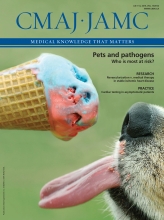With the number of Canadians over 65 set to double in the next 20 years and the number over 80 set to quadruple over the next 30 years, a growing number of health care planners and geriatricians think “frailty” should be formally adopted as a clinical concept within elder care.
But what, beyond the misogyny of Shakespeare’s oft-quoted definition, does “frailty” actually mean in medical terms?
Speaking at the Technology Evaluation in the Elderly Network National Forum 2015 in Toronto dedicated to kick-starting work on a “national strategy for the care of the frail elderly,” Dr. Ken Rockwood, director of geriatric medicine research at Dalhousie University in Halifax, outlined a set of more than 30 frailty indicators across domains including cognition, communication, mood and behaviour, activities of daily living, continence, nutrition, skin condition, falls, vision and a multitude of medical diagnoses such as arthritis.
These indicators have been clustered into nine states of frailty, ranging from very fit to terminally ill, that can be assessed in clinical care settings, Rockwood said at the June 5 forum, which was funded by the federal government with support from the Canadian Medical Association (CMA), industry, government and academic organizations.
“Seen as a health state or syndrome,” Rockwood said, “frailty is a state of increased risk compared with others of the same age. People of the same age have different numbers of things wrong with them. And the fewer of these things you have wrong with you, the more likely you are to survive an acute illness. This is the basis of frailty.”
For clinicians, Rockwood emphasized, frailty is a concept that requires close consideration of patients’ lives outside the hospital or clinic. That comment drew strong support from Dr. Samir Sinha, director of geriatrics at Mount Sinai Hospital and the University Health Network Hospitals in Toronto.

For older patients, bed rest and immobility can be deadly, says Dr. Samir Sinha, director of geriatrics at the University Health Network Hospitals in Toronto.
Image courtesy of VBaleha/iStock
For frail patients, Sinha explained, knowledge of underlying problems rooted in social and family histories is often crucial. “We’re more socially frail than ever before; 28% of elderly Canadians are without a loved one or friend who can help get a prescription filled.”
Citing data from Toronto’s Mount Sinai Hospital, which Sinha says is the first Canadian health care centre to make geriatrics a core priority, he argued that by better anticipating the needs of frail patients, the “hazards of hospitalization” can be dramatically reduced, as can costs.
“For older patients, bed rest and immobility can be deadly,” Sinha explained. “Why should a patient be horizontal when awaiting a catheter?” Reforms aimed at providing better care for the frail older patient have resulted in a 26% reduction in the length of stay at the Mount Sinai emergency department and saved at least $6 million, he said.
Alongside better hospital care, the frail older person needs better community care focused on avoiding the need for acute care, argued Dr. Jayna Holroyd-Leduc, director of the geriatric medicine training program at the University of Calgary Department of Medicine. “More care does not spell better care,” said Holroyd-Leduc during an open discussion. “A growing body of evidence indicates aggressive, invasive care can be injurious. That’s hugely important to consider with the frail.”
Noting that Canadians are twice as likely as Americans to die in hospital, and are twice as likely to see 10 or more doctors in their last six months of life, Dr. Rob Fowler, a senior scientist at Toronto’s Sunnybrook Medical Centre, emphasized that patient preferences are far too often discounted.
Citing data from a survey of 278 very elderly patients and 225 family members at 12 Canadian hospitals that was recently published in JAMA Internal Medicine, Fowler noted that only 11.9% preferred life-prolonging care, and that agreement between patients’ expressed preferences for end-of-life care and the documentation in their medical records was found in only 30% of cases.
“We’re not responsive to what patients want,” Fowler said. His comments were echoed by Dr. Susan MacDonald, president of the Canadian Society of Palliative Care Physicians. “We need far more robust options for palliative care, and for death at home or in a hospice.”
In driving better care for the frail older person, numerous presenters emphasized the need for better electronic health records, and better integration of health care programs for these patients as they transition between homes, hospitals, long-term care facilities and hospices.
“In our poorly coordinated system, patients come to emergency departments for care in greater numbers than anywhere else in the industrialized world,” observed CMA President Dr. Chris Simpson in a speech that opened the forum. “Hospitals are dangerous places for people who don’t have acute conditions. Too many of these patients are in wrong place.”











